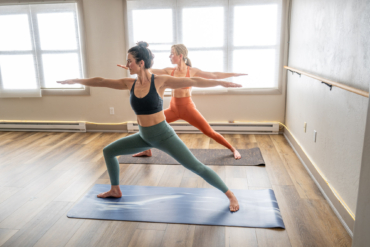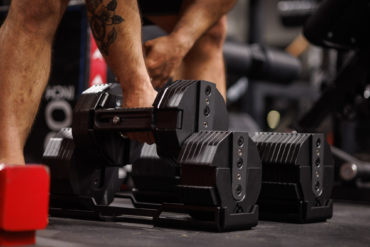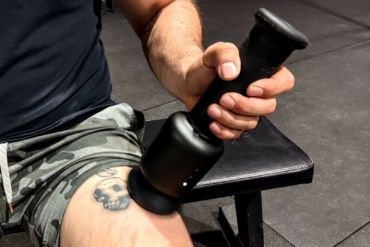Fitness studios across the country are dimming the lights to help clients get in the zone — but there’s little evidence that it has any effect on the quality of their sweat sessions.
Jenni Nettik prefers to run at night, sometimes in the city and sometimes on the trails surrounding Denver. The running coach and owner of Mercuria Running finds that removing the visual cues of sunlight helps her and her clients more acutely tune into their bodies.
“You might run faster or farther just because you’re not paying attention to your watch or other typical feedback,” she said. “It narrows your focus. When your focus is narrowed, you get into a state of flow.”
That flow state, or so-called runner’s high, is something many athletes seek, whether they’re professionals or intermittent runners. It’s also part of the reason why boutique fitness studios from Colorado to Hong Kong have traded fluorescent lights for dark or partially lit workout spaces.
“I can’t say it’s been scientifically proven, but for us, it’s helped with attitude, motivation, and confidence,” says Chris Hudson, vice president of curriculum at Barry’s Bootcamp. Barry’s Bootcamp uses red LED lighting in its trademark Red Room workouts (and sells the lightbulbs for home use).

Setting the Mood With Dim Lighting
Dim lighting is a key part of the marketing strategy for everything from candlelit yoga to spin cycling to boxing. High Ride Cycle, which has two Denver-area locations, calls its classes “a dance party on a bike.”
“When the lights are down low, it’s less intimidating and feels a bit more welcoming and supportive for people. No one’s focused on what everyone else looks like or what they look like — they’re focused on getting a good workout,” says Megan Hanson, High Ride’s co-founder and CEO. “You’re really just inwardly focused on yourself.”
There’s a reason you set out candles for a romantic dinner: Lighting is all about setting the mood. In a similar vein, yoga studios may dim the overheads to create a calmer space, or spin instructors may infuse their workout with darker or disco-esque lighting paired with pumping music. “It changes that atmosphere and I think helps push people a little faster,” Hanson said.
Manipulating the lights also minimizes distractions and helps clients focus their attention on the movement, according to Debra Strougo, co-founder of Row House, a rowing-based studio with locations in five states. “I think the dark is relevant for the group energy,” she said. “I don’t think we can create that in white light, in fluorescent light.”
“That energy is really driven in the dim lighting. Walking from a lit lobby into a darker room is also a mental clue that you’re entering a different part of your day,” Strougo continued. “It helps compartmentalize your day so you can focus solely on building up a sweat.”

Working Out in the Dark: Real Benefits?
There’s plenty of anecdotal evidence, but is there scientific proof that working out in the dark pushes you harder? Not really. While research exists about working out in the morning versus the evening, the benefits or drawbacks of working out under reduced light haven’t really been explored.
A small study of all-male participants published in Plos One in 2012 found that “bright light increases physical performance levels,” though the impact varied depending on the subject’s internal circadian clock.
Though not exercise-focused, a series of studies published in the Journal of Environmental Psychology in 2013 concluded that dimmer lighting can improve creative performance and that “darkness elicits a feeling of being free from constraints.” This loosely supports the idea that people move better and are less self-conscious with less illumination.
Regardless, fitness instructors are confident that there are tangible benefits to the practice. And while dark workouts lend themselves more easily to modalities like rowing or stationary bikes, which require limited movement around a space, running coach Nettik says you’ll gain similar benefits from running in the dark. It’s safe as long as you’re smart about it.
In non-COVID times, Nettik organizes the Highland Tap & Burger Run Club, a year-round running club that meets weekly. In the winter, it’s pitch-black during the group’s 4-mile loops.

Here are Nettik’s four tips for safely hitting the pavement at dark:
- Plan your route ahead of time on well-lit, neighborhood streets. They’re more populated, so you won’t be isolated.
- Consider running on the street — against traffic — instead of on the sidewalk or bike paths, which may be more poorly lit.
- Outfit yourself in reflective gear on the front and back so you’re visible to cars. Or use two sources of light — like a headlamp and a light around your waist — to provide better depth perception.
- Leave the headphones at home so you can hear cars or other people approaching.








